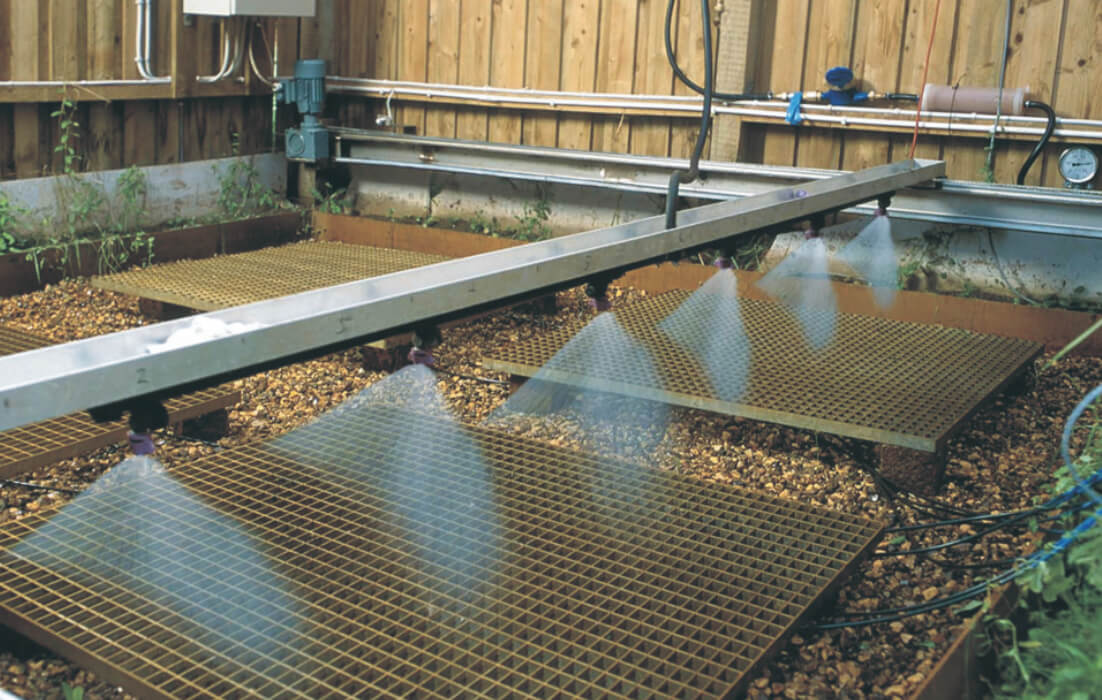
How to Cite
Share
Abstract
Recent research on Danish groundwater has focused on clarifying the fate and transport of pesticides that leach through clayey till aquitards with low matrix permeability. Previously, these aquitards were considered as protective layers against contamination of underlying groundwater aquifers due to their low permeability characteristics. However, geological heterogeneities such as fractures and macropores have been recognised as preferential flow paths within low permeable clayey till (e.g. Beven & Germann 1982). The flow velocities within these preferential flow paths can be orders of magnitude higher than in the surrounding clay matrix and pose a major risk of transport of contaminants to the underlying aquifers (e.g. Nilsson et al. 2001). Previous studies of transport in fractured clayey till have focused on fully saturated conditions (e.g. Sidle et al. 1998; McKay et al. 1999). However, seasonal fluctuations of the groundwater table typically result in unsaturated conditions in the upper few metres of the clay deposits, resulting in different flow and transport conditions. Only a few experiments have examined the influence of unsaturated conditions on flow and solute (the dissolved inorganic and organic constituents) transport in fractured clayey till. These include small-scale laboratory column experiments on undisturbed soil monoliths (e.g. Jacobsen et al. 1997; Jørgensen et al. 1998), intermediate scale lysimeters (e.g. Fomsgaard et al. 2003) and field-scale tile drain experiments (e.g. Kjær et al. 2005). The different approaches each have limitations in terms of characterising flow and transport in fractured media. Laboratory studies of solute transport in soils (intact soil columns) are not exactly representative of field conditions due to variations in spatial variability and soil structure. In contrast, field studies hardly allow quantification of fluxes and mechanisms of transport. Column and lysimeter experiments are often limited in size, and tile-drain experiments on field scale do not provide spatial resolution and often have large uncertainties in mass balance calculations. Thus, in order to represent the overall natural fracture network systems on a field scale with respect to acquiring insights into flow and transport processes, the lysimeter needs to be larger than normal lysimeter size (< 1 m3). A modified large-scale lysimeter was therefore constructed by the Geological Survey of Denmark and Greenland (GEUS) at the Avedøre experimental field site 15 km south of Copenhagen (Fig. 1). This lysimeter consisted of an isolated block (3.5 ×3.5 ×3.3 m) of unsaturated fractured clayey till with a volume sufficient to represent the overall preferential flow paths (natural fracture network) within lowpermeable clayey till at a field scale.
How to Cite
Share
Downloads
Editors: Martin Sønderholm & A.K. Higgins
The Review of Survey activities presents a selection of 18 papers reflecting the wide spectrum of activities of the Geological Survey of Denmark and Greenland, from the microbial to the plate tectonic level.
Activities in Denmark: The Survey's activities in Denmark are documented by 11 papers. The main themes [...]










